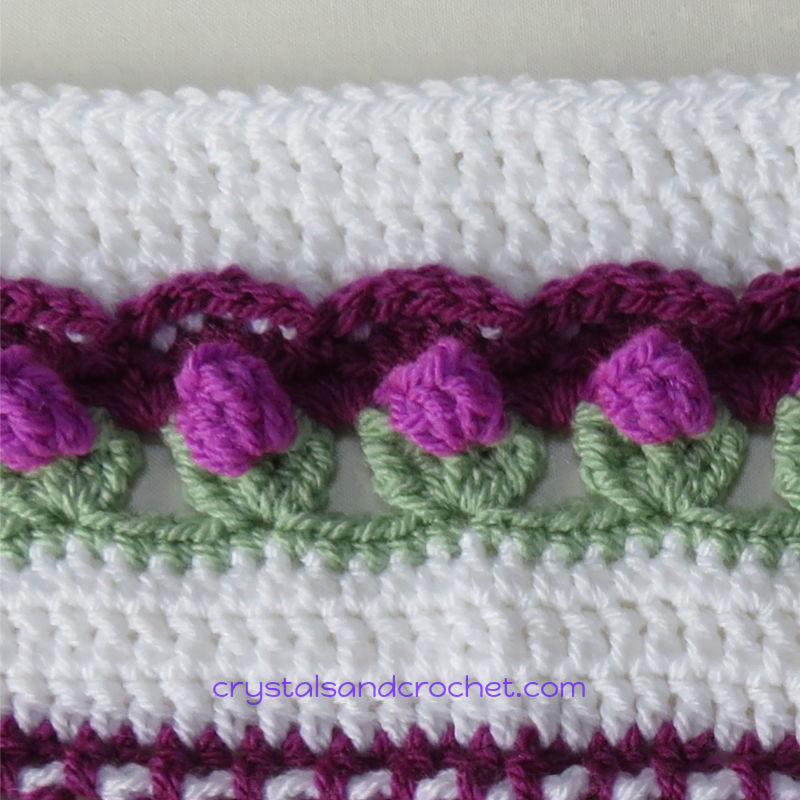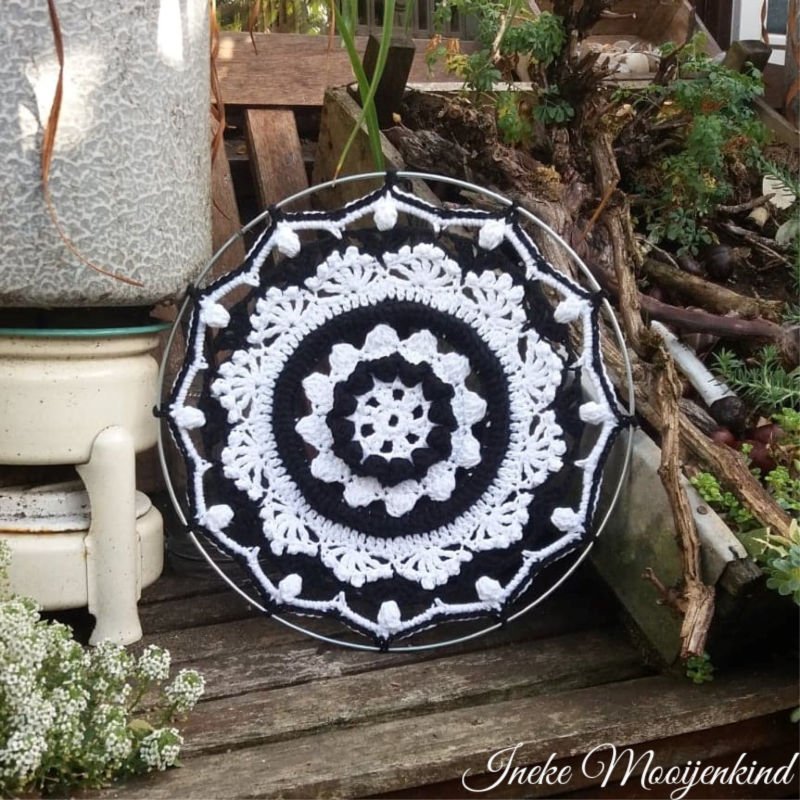All good designers have every pattern they design tested by at least 3 testers.
But what is a pattern tester and how do you become one?
Why do patterns even need to be tested?
Let’s start with the why before we get on to the how or who part.
Why do crochet patterns need testing?
Well, we are all human and we make mistakes.
Patterns need testing to make sure they are easy to read, and all the instructions and stitch counts are correct. That the instructions are consistent and grammatically correct.
I know with every pattern I write there are mistakes to correct, this is often because I make a round, write it down, and then a couple of rounds later something doesn’t work as I wanted it to, so I rip it out and start again, that means I need to change the instructions and the stitch counts, and sometimes things get missed.
I am also a bit of a cheat and if a round is repeated, I will copy and paste to save typing time, again this is where I may miss the number of repeats or which round certain stitches are worked into.
♥ Did I say we are all human!
Here are some examples of mistakes and corrections found in one of my recent designs, and how we work together to fix the mistakes.
Complex correction
Hint: when closing through all loops do not pull tightly.
20. C4. Join with a sl-st in any st, ch 3 [counts as 1st partial tr], 2 partial tr in same st, (skip next 2 sts, 3 partial tr in next st) twice, yo and pull through all 9 loops, ch 1 to form eye, [P1], (ch 8, (skip next 2 sts, 3 partial tr in next st) 3 times, yo and pull through all 10 loops, ch 1 to form eye) [P2] 19 times.
Join in closing eye of 1st daisy with a sl-st.
Stitch count: 20 daisies, 20 ch-8 spaces.
♥ This is how the conversation between Ineke and I went…
Ineke – but there is something wrong with round 20 hold on…..
Ineke – In first part has to be 9 loops………
Ineke – 20. C4. Join with a sl-st in any st, ch 3 [counts as 1st partial tr], 2 partial tr in same st, (skip next 2 sts, 3 partial tr in next st) twice, yo and pull through all 9 loops, ch 1 to form loop, [P1]
Me – yes and it should be ch-1 to form eye not loop!
Me – 20. C4. Join with a sl-st in any st, ch 3 [counts as 1st partial tr], 2 partial tr in same st, (skip next 2 sts, 3 partial tr in next st) twice, yo and pull through all 9 loops, ch 1 to form loop, [P1] (ch 8, (skip next 2 sts, 3 partial tr in next st) 3 times, yo and pull through all 10 loops, ch 1 to form eye) [P2] 19 times. Join in closing eye of 1st daisy with a sl-st. Stitch count: 20 daisies, 20 ch-8 spaces.
Me – arrrgggghhhh nope
Me – 20. C4. Join with a sl-st in any st, ch 3 [counts as 1st partial tr], 2 partial tr in same st, (skip next 2 sts, 3 partial tr in next st) twice, yo and pull through all 9 loops, ch 1 to form eye, [P1] (ch 8, (skip next 2 sts, 3 partial tr in next st) 3 times, yo and pull through all 10 loops, ch 1 to form eye) [P2] 19 times. Join in closing eye of 1st daisy with a sl-st. Stitch count: 20 daisies, 20 ch-8 spaces.
Ineke – Yesssssssssssss!
♥ Can you see why and where the corrections were made?
Simple correction
45. Ch 1 and sc in same st, sc in next st, [P1]
(in ch-2 space (sc, ch 2, sc), sc in next 2 sts, skip next 3 sts, 2 tr in next st, tr in next st, dc in next 3 sts, hdc in next 3 sts, sc in next 3 sts, hdc in next 2 sts, dc in next 2 sts, tr in next 3 sts, dc in next 2 sts, hdc in next 2 sts, sc in next 3 sts, hdc in next 3 sts, dc in next 3 sts, tr in next st, 2 tr in next st, skip next 3 sts, sc in next 2 sts) [P2] 10 times, omit last sc.
Join to 1st sc with a sl-st.
Stitch count: per repeat: 12 sc, 10 hdc, 10 dc, 9 tr, 1 ch-2 point space.
♥ Correction… R45= omit last 2 sc
This just gives you a little idea of a more complex correction and a very simple one.
Another problem is that as a designer we know what we want the instructions to say and often don’t see that we typed something different.
The same goes for people who test on a regular basis for the same designer, we get used to the way of writing and our brain does an auto correct which does not always register in our conscious mind, and so simple mistakes can be missed.
So, how should a pattern be tested?
♥ There are no hard and fast rules, but what a designer wants is for the pattern to be perfect, and so do all the people who are going to make the item.
♥ We all work differently, we all have our own way, but what we need to do is read every part of the pattern, from the abbreviations and special stitches, through the instructions and stitch counts, from the first word to the last.
♥ When I am testing, I work from a screen, others prefer to print and work from the paper.
♥ Either way each line must be read correctly, then the stitches made, then we go back and check again and make a note of any corrections.
♥ I like my testers to tell me as soon as they find a mistake, and as you saw above, we work through it and make sure it is correct.
♥ Some designers will only want all the corrections once the item is completed.
♥ Sharing progress photos is great, because designs look so different when made with different colours, and it encourages both the designer and the tester.
♥ A designer will always have a timeframe to work to, and testers need to stick to the time limits.
Who can test patterns?
If you can crochet and read a pattern then you can test a pattern, however, you must be prepared to work with the designer and within their time frame.
You must be able to pick out the mistakes and corrections that need to be made.
Some designers will ask you to keep detailed records of your testing work, others will only want minimal information, we will all ask you to keep things under wraps until we are ready to publish, especially if it is for a CAL [crochet a-long] where it may be tied into a yarn company and their timeframes.
I like my testers to make a project page on Ravelry, this includes the yarn, brand, weight, amounts, and the hook size used, and some good quality photographs.
They can also add comments or hints to help others understand tricky parts.
They may even record the amount of yarn used for each round (very helpful if you are making an item from your stash).
Remember testing is not about you telling a designer how to write their patterns, but about helping them to publish mistake free patterns.
Testers do not get paid for testing and we all have busy lives, each designer will always be looking for new people to help them and test for them. What you should receive as a tester is a copy of the completed pattern for your own future use.
So, you think you have what it takes to be a tester, but how do you become a tester?
It is really, simple…. You ask your favourite designers if they are looking for new testers and let them know you want to work with them.
You may not get on the testing team for a while, but sometimes you will get lucky straight off the bat, keep trying and keep letting designers know you want to help them.
In the meantime, practice your photography skills, we all love to see great photos of each other’s work. Make some project pages of work you have done on Ravelry, get used to making a note of yarn, colours, hook size etc you are using and adding little comments abut your favourite parts of a pattern or design.
Take photos of your favourite parts of a pattern.
Use natural lighting when ever possible.
Add small props, flowers, shells, crystals, to add extra interest to your photos.
♥ The more we all work together to raise the standard of pattern writing the better it is for everyone who practices our amazing craft.
♥ Please go to my Ravelry store to see all my patterns, both free and paid.
♥ Please remember all of my patterns are covered by copyright law and may not be copied or shared in any way.
♥ Please love and respect me, as I love and respect you. ♥
♥ The best way to be in the know with all I am up to, is to follow crystalsandcrochet on Facebook.
♥ If you need help and advice, the quickest way to find support is to join Helen’s Hookaholics Facebook group. There you will find a very supportive group of likeminded people. It’s also a great place to share your crystalsandcrochet makes, and see what others are making, and see what I am up to.
♥ If you are not a fan of Facebook you can always email me with any questions you may have by using the contact form here.





